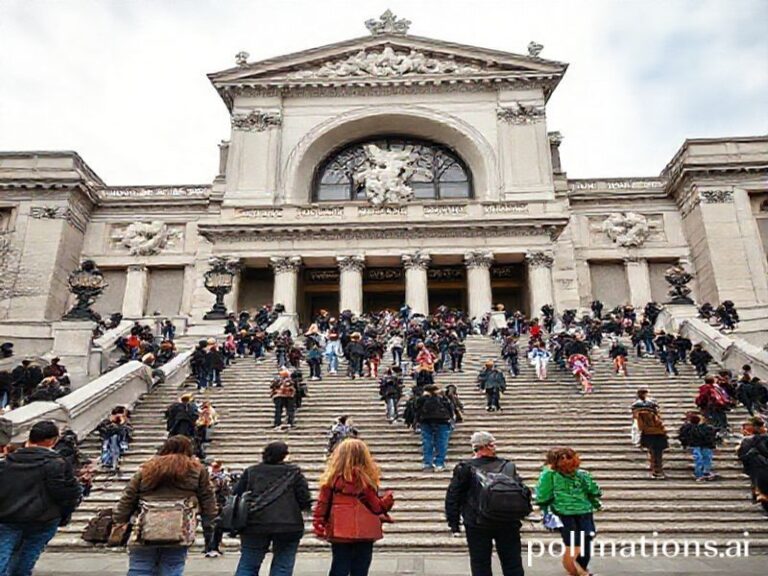Fear & Greed Index: Why the Market’s Mood Ring is the Internet’s New Obsession
# **Fear and Greed Index: The Market’s Mood Ring is Trending, and Here’s Why**
In a world where memes dictate market trends and Elon Musk’s tweets can send stocks into a tailspin, it’s no surprise that the Fear & Greed Index has become the internet’s latest obsession. This nifty little tool, which measures investor sentiment in the stock market, has gone viral, sparking memes, debates, and even financial decisions. But why is everyone suddenly so fixated on this index? Let’s dive in.
### **What is the Fear & Greed Index?**
For those who haven’t been initiated into the cult of Wall Street, the Fear & Greed Index is a metric that gauges investor sentiment. It ranges from 0 (extreme fear) to 100 (extreme greed), helping traders and investors understand the market’s mood. Developed by CNN Business, it’s based on factors like stock price momentum, market volatility, and safe-haven demand.
Think of it as the market’s emotional barometer. When fear dominates, stocks are often undervalued, presenting a buying opportunity for the brave. When greed takes over, the market might be due for a correction. It’s like the market’s version of a mood ring—except instead of changing colors, it changes numbers, and the stakes are a little higher than a bad fashion choice.
### **Why is it trending now?**
The Fear & Greed Index has always been a tool for traders, but it’s recently exploded in popularity thanks to a few key factors:
1. **Meme Stock Mania**: The rise of Reddit-fueled trading groups like WallStreetBets has brought retail investors into the spotlight. These traders aren’t just following traditional financial advice—they’re making moves based on memes, viral trends, and, yes, the Fear & Greed Index. When the index shows extreme fear, they see it as a sign to buy, and when it shows extreme greed, they might take profits.
2. **Social Media Amplification**: Twitter, Reddit, and TikTok have turned finance into a spectator sport. The Fear & Greed Index is now a hot topic of discussion, with users sharing screenshots, memes, and hot takes on what the latest reading means for their portfolios. It’s become a cultural touchstone, a way for people to feel connected to the market’s ups and downs.
3. **Market Volatility**: The past few years have been a rollercoaster for investors, with the COVID-19 pandemic, geopolitical tensions, and economic uncertainty causing wild swings in the market. The Fear & Greed Index provides a simple, digestible way to understand the market’s mood, making it a go-to resource for both seasoned traders and newcomers.
### **Cultural Context: The Internet’s Obsession with Numbers**
The Fear & Greed Index isn’t the first metric to capture the internet’s imagination. From the Dow Jones to Bitcoin’s price, numbers have always held a certain allure. They’re concrete, measurable, and, most importantly, shareable. The internet loves a good stat, and the Fear & Greed Index is no exception.
It’s also part of a broader trend of democratizing finance. Tools like Robinhood and apps that gamify investing have made the stock market accessible to everyone, and the Fear & Greed Index is just another piece of the puzzle. It’s a way for retail investors to feel like they’re in the know, even if they’re not Wall Street insiders.
### **Social Impact: The Power of Sentiment**
The Fear & Greed Index isn’t just a fun talking point—it has real-world implications. When the index shows extreme fear, it can signal a buying opportunity, encouraging investors to put their money into the market. Conversely, when greed is high, it might be a sign to sell before a potential downturn.
But here’s the catch: the index itself can influence the market. If enough people see the index showing extreme greed and decide to sell, it could trigger a sell-off, creating a self-fulfilling prophecy. The same goes for extreme fear—if everyone sees the index and decides to buy, it could drive prices up. It’s a feedback loop that highlights the power of sentiment in the market.
### **Why This Topic is Significant**
The Fear & Greed Index is more than just a trending topic—it’s a reflection of how the internet is changing finance. It’s a tool that empowers retail investors, a cultural touchstone that brings people together, and a metric that can move markets. In a world where information spreads faster than ever, understanding the market’s mood has never been more important.
So, whether you’re a seasoned trader or just someone who enjoys a good meme, the Fear & Greed Index is worth paying attention to. It’s a window into the market’s soul, and right now, that soul is trending.







